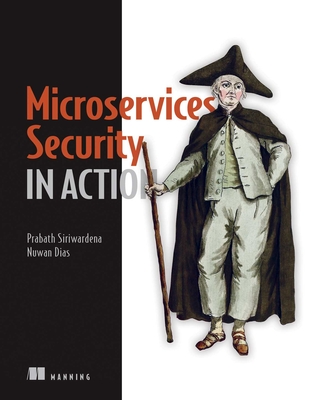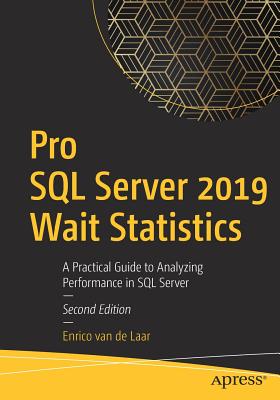Fast and Efficient Context-Aware Services
暫譯: 快速且高效的上下文感知服務
Danny Raz, Arto Tapani Juhola, Joan Serrat-Fernandez, Alex Galis
- 出版商: Wiley
- 出版日期: 2006-07-01
- 售價: $4,810
- 貴賓價: 9.5 折 $4,570
- 語言: 英文
- 頁數: 222
- 裝訂: Hardcover
- ISBN: 047001668X
- ISBN-13: 9780470016688
海外代購書籍(需單獨結帳)
買這商品的人也買了...
-
 Service and Device Discovery: Protocols and Programming
Service and Device Discovery: Protocols and Programming$2,290$2,176 -
 $2,280Working Effectively with Legacy Code (Paperback)
$2,280Working Effectively with Legacy Code (Paperback) -
 Spring in Action, 4/e (Paperback)
Spring in Action, 4/e (Paperback)$1,900$1,805 -
 Arduino 官方正版 Genuino 101
Arduino 官方正版 Genuino 101$1,700$1,700 -
 Raspberry Pi 3 Model B+ (UK製)
Raspberry Pi 3 Model B+ (UK製)$4,620$4,389 -
 JVM Performance Engineering: Inside OpenJDK and the HotSpot Java Virtual Machine (Paperback)
JVM Performance Engineering: Inside OpenJDK and the HotSpot Java Virtual Machine (Paperback)$1,980$1,881 -
 晉昇軟體最高殿堂:Jenkins2 持續整合大師之路
晉昇軟體最高殿堂:Jenkins2 持續整合大師之路$600$474 -
 Deep Learning with JavaScript: Neural Networks in Tensorflow.Js
Deep Learning with JavaScript: Neural Networks in Tensorflow.Js$1,650$1,568 -
 JavaScript 技術手冊
JavaScript 技術手冊$560$442 -
 Building a Future-Proof Cloud Infrastructure: A Unified Architecture for Network, Security and Storage Services (Paperback)
Building a Future-Proof Cloud Infrastructure: A Unified Architecture for Network, Security and Storage Services (Paperback)$1,998$1,898 -
 Microservices Security in Action
Microservices Security in Action$1,980$1,881 -
 Java SE 14 技術手冊
Java SE 14 技術手冊$680$537 -
 Parallel and High Performance Computing (Paperback)
Parallel and High Performance Computing (Paperback)$2,450$2,328 -
 $1,425Domain Storytelling: A Collaborative, Visual, and Agile Way to Build Domain-Driven Software (Paperback)
$1,425Domain Storytelling: A Collaborative, Visual, and Agile Way to Build Domain-Driven Software (Paperback) -
 $1,840Multithreaded JavaScript: Concurrency Beyond the Event Loop
$1,840Multithreaded JavaScript: Concurrency Beyond the Event Loop -
 $2,475Software Architecture: The Hard Parts: Modern Trade-Off Analyses for Distributed Architectures (Paperback)
$2,475Software Architecture: The Hard Parts: Modern Trade-Off Analyses for Distributed Architectures (Paperback) -
 Structure and Interpretation of Computer Programs: JavaScript Edition (Paperback)
Structure and Interpretation of Computer Programs: JavaScript Edition (Paperback)$2,680$2,626 -
 $1,824Mastering API Architecture: Design, Operate, and Evolve Api-Based Systems (Paperback)
$1,824Mastering API Architecture: Design, Operate, and Evolve Api-Based Systems (Paperback) -
 OAuth 2.0 從入門到實戰:利用驗證和授權守護 API 的安全
OAuth 2.0 從入門到實戰:利用驗證和授權守護 API 的安全$600$510 -
 $2,233Functional and Concurrent Programming: Core Concepts and Features
$2,233Functional and Concurrent Programming: Core Concepts and Features -
 $1,805Functional Design: Principles, Patterns, and Practices (Paperback)
$1,805Functional Design: Principles, Patterns, and Practices (Paperback) -
 OpenTelemetry 入門指南:建立全面可觀測性架構(iThome鐵人賽系列書)【軟精裝】
OpenTelemetry 入門指南:建立全面可觀測性架構(iThome鐵人賽系列書)【軟精裝】$750$585 -
 $2,043Learning Systems Thinking: Essential Nonlinear Skills and Practices for Software Professionals (Paperback)
$2,043Learning Systems Thinking: Essential Nonlinear Skills and Practices for Software Professionals (Paperback) -
 Collaborative Software Design: How to Facilitate Domain Modeling Decisions
Collaborative Software Design: How to Facilitate Domain Modeling Decisions$1,980$1,881 -
 $2,119Mastering Opentelemetry and Observability: Enhancing Application and Infrastructure Performance and Avoiding Outages
$2,119Mastering Opentelemetry and Observability: Enhancing Application and Infrastructure Performance and Avoiding Outages
商品描述
Description
Fast and Efficient Context-Aware Services gives a thorough explanation of the state-of-the-art in Context-Aware-Services (CAS). The authors describe all major terms and components of CAS, defining context and discussing the requirements of context-aware applications and their use in 3rd generation services. The text covers the service creation problem as well as the network technology alternatives to support these services and discusses active and programmable networks in detail. It gives an insight into the practical approach followed in the CONTEXT project, supplying concrete guidelines for building successful context-aware services.
Fast and Efficient Context-Aware Services:
- Provides comprehensive and in-depth information on state-of-the-art CAS technology.
- Proposes a system architecture for CAS creation and delivery, discussing service management and active network layers.
- Describes the service lifecycle functional architecture, covering service authoring, customization, invocation, and assurance.
- Explains system design considerations and details, system evaluation criteria, test-bed requirements, and evaluation results.
Fast and Efficient Context-Aware Services is an invaluable resource for telecommunications developers, researchers in academia and industry, advanced students in Computer Science and Electrical Engineering, telecoms operators, as well as telecommunication management and operator personnel.
Table of Contents
- Foreword.
Abbreviations.
1. Introduction.
1.1. Context-Aware Services.
1.2. The Context Project.
1.3. Structure of the Book.
1.4. Acknowledgements.
2. Context Awareness and Modeling: Background.
2.1. Some Context Definitions.
2.2. Context-Aware Service.
2.3. Context-Awareness System Research.
2.3.1. Context-Aware Ubiquitous Computing Applications.
2.3.2. Context-Aware Frameworks.
2.3.3. Context-Aware Application Life Cycle.
2.3.4. Context in GRID Computing.
2.3.5. Context-Aware Sensors’ Computing.
2.3.6. Context-Aware Ontologies.
2.3.7. Context in Mobile Systems and Devices.
2.3.8. Context Aware Communications.
2.3.9. Context-Aware Flows.
References.
3. The Service Life Cycle Functional Architecture.
3.1. Introduction.
3.2. Service Life Cycle Model for Context-Aware Services.
3.3. Service Creation.
3.3.1. CAS Authoring.
3.3.2. Service Customization.
3.3.3. Code and Policies Generation Engine.
3.4. Service Management.
3.4.1. Code Distributor.
3.4.2. Code Execution Controller.
3.4.3. Invocation Service Listener.
3.4.4. Service Assurance.
3.5. Conclusions.
References.
4. Context-Aware Services and the Network Layer.
4.1. Network Layer Requirements for Context-Aware Services.
4.2. Current State of Service-Aware Networks and Open Network Interfaces.
4.3. Requirements for Network Context Information Collection and Dissemination.
4.3.1. Access to Local Network Level Information.
4.3.2. Gathering and Disseminating Global Network Information.
4.4. Requirements for Network Level Control.
4.5. Security Considerations.
4.5.1. Implementation Aspects.
4.6. Conclusions.
References.
5. Baseline Technology Review.
5.1. Introduction.
5.2. Open Signaling Approach.
5.3. IFTF ForCES Approach.
5.4. DARPA Active Networks Approach.
5.5. Programmable Networks Components.
5.5.1. Node OS: Node Operating Systems.
5.5.2. EE: Execution Environments.
5.5.3. Programmable Management Services.
References.
6. CAS Creation and Management – System Architecture and Design Considerations.
6.1. Introduction.
6.2. Service Layer Overview.
6.2.1. Policy Management Components.
6.2.2. Service Execution Components.
6.2.3. Interfaces Between Service Layer Components.
6.3. Service Layer Implementation Considerations.
6.3.1. Why Policies?
6.3.2. Objectives of the Policy-Based Service Management System.
6.4. Context Policy-Based Service Management System.
6.4.1. On System Components.
6.4.2. Domain-Specific Policies.
6.4.3. Service Assurance.
References.
7. The Service Execution Environment and Context Delivery.
7.1. A Bird’s-Eye View.
7.2. The Active Platform.
7.2.1. The Session Broker.
7.2.2. Execution Environment.
7.2.3. Management of Active Nodes.
7.2.4. DINA Active Packets.
7.2.5. Security.
7.2.6. The IP-Related Brokers.
7.2.7. VoIP Support: the SIP Broker.
7.2.8. Wireless Support: The WLAN Broker.
7.3. Context Delivery System.
7.3.1. Functional Overview.
7.3.2. Functional Decomposition.
7.3.3. Context Broker Interfaces.
7.4. Conclusions.
References 167
8. System Evaluation.
8.1. The Scenarios.
8.1.1. Work From Anywhere (WFA).
8.1.2. Crisis-Aware Telecommunications Services.
8.1.3. Moving Campus Services.
8.1.4. Testbed and Service Layer Set Up.
8.2. Performance Evaluation.
8.2.1. CPU Load.
8.2.2. Info-Broker Load.
8.3. Conclusions.
9. Conclusions.
9.1. Context-Aware Services.
9.2. Autonomic Communications Vision.
References.
Index.
商品描述(中文翻譯)
**描述**
《快速且高效的情境感知服務》對情境感知服務(Context-Aware Services, CAS)的最新技術進行了全面的解釋。作者描述了CAS的所有主要術語和組件,定義了情境並討論了情境感知應用的需求及其在第三代服務中的應用。文本涵蓋了服務創建問題以及支持這些服務的網絡技術替代方案,並詳細討論了主動和可編程網絡。它提供了對於在CONTEXT項目中所採用的實際方法的深入了解,並提供了構建成功情境感知服務的具體指導。
《快速且高效的情境感知服務》:
- 提供有關最新CAS技術的全面且深入的信息。
- 提出了一個CAS創建和交付的系統架構,討論了服務管理和主動網絡層。
- 描述了服務生命周期的功能架構,涵蓋服務創作、定制、調用和保證。
- 解釋了系統設計考量和細節、系統評估標準、測試平台需求和評估結果。
《快速且高效的情境感知服務》是電信開發人員、學術界和業界的研究人員、計算機科學和電氣工程的高級學生、電信運營商以及電信管理和運營人員的寶貴資源。
**目錄**
- 前言
- 縮寫
- 1. 介紹
- 1.1. 情境感知服務
- 1.2. 情境項目
- 1.3. 本書結構
- 1.4. 致謝
- 2. 情境感知與建模:背景
- 2.1. 一些情境定義
- 2.2. 情境感知服務
- 2.3. 情境感知系統研究
- 2.3.1. 情境感知的普遍計算應用
- 2.3.2. 情境感知框架
- 2.3.3. 情境感知應用生命周期
- 2.3.4. GRID計算中的情境
- 2.3.5. 情境感知傳感器計算
- 2.3.6. 情境感知本體
- 2.3.7. 移動系統和設備中的情境
- 2.3.8. 情境感知通信
- 2.3.9. 情境感知流
- 參考文獻
- 3. 服務生命周期功能架構
- 3.1. 介紹
- 3.2. 情境感知服務的服務生命周期模型
- 3.3. 服務創建
- 3.3.1. CAS創作
- 3.3.2. 服務定制
- 3.3.3. 代碼和政策生成引擎
- 3.4. 服務管理
- 3.4.1. 代碼分發器
- 3.4.2. 代碼執行控制器
- 3.4.3. 調用服務監聽器
- 3.4.4. 服務保證
- 3.5. 結論
- 參考文獻
- 4. 情境感知服務與網絡層
- 4.1. 情境感知服務的網絡層需求
- 4.2. 服務感知網絡和開放網絡接口的當前狀態
- 4.3. 網絡情境信息收集和傳播的需求
- 4.3.1. 訪問本地網絡層信息
- 4.3.2. 收集和傳播全球網絡信息
- 4.4. 網絡層控制的需求
- 4.5. 安全考量
- 4.5.1. 實施方面
- 4.6. 結論
- 參考文獻
- 5. 基線技術回顧
- 5.1. 介紹
- 5.2. 開放信號方法
- 5.3. IFTF ForCES 方法
- 5.4. DARPA 主動網絡方法
- 5.5. 可編程網絡組件
- 5.5.1. 節點操作系統
- 5.5.2. 執行環境
- 5.5.3. 可編程管理服務
- 參考文獻
- 6. CAS創建與管理 – 系統架構與設計考量
- 6.1. 介紹
- 6.2. 服務層概述
- 6.2.1. 政策管理組件
- 6.2.2. 服務執行組件
- 6.2.3. 服務層組件之間的接口
- 6.3. 服務層實施考量
- 6.3.1. 為什麼需要政策?
- 6.3.2. 基於政策的服務管理系統的目標
- 6.4. 基於情境的政策服務管理系統
- 6.4.1. 系統組件
- 6.4.2. 特定領域的政策
- 6.4.3. 服務保證
- 參考文獻
- 7. 服務執行環境與情境交付
- 7.1. 總覽
- 7.2. 主動平台
- 7.2.1. 會話代理
- 7.2.2. 執行環境
- 7.2.3. 主動節點的管理
- 7.2.4. DINA主動數據包
- 7.2.5. 安全性
- 7.2.6. 與IP相關的代理
- 7.2.7. VoIP支持:SIP代理
- 7.2.8. 無線支持:WLAN代理
- 7.3. 情境交付系統
- 7.3.1. 功能概述
- 7.3.2. 功能分解
- 7.3.3. 情境代理接口
- 7.4. 結論
- 參考文獻
- 8. 系統評估
- 8.1. 場景
- 8.1.1. 隨處工作(WFA)
- 8.1.2. 危機感知電信服務
- 8.1.3. 移動校園服務
- 8.1.4. 測試平台和服務層設置
- 8.2. 性能評估
- 8.2.1. CPU負載
- 8.2.2. 信息代理負載
- 8.3. 結論
- 9. 結論
- 9.1. 情境感知服務
- 9.2. 自主通信願景
- 參考文獻
- 索引






























